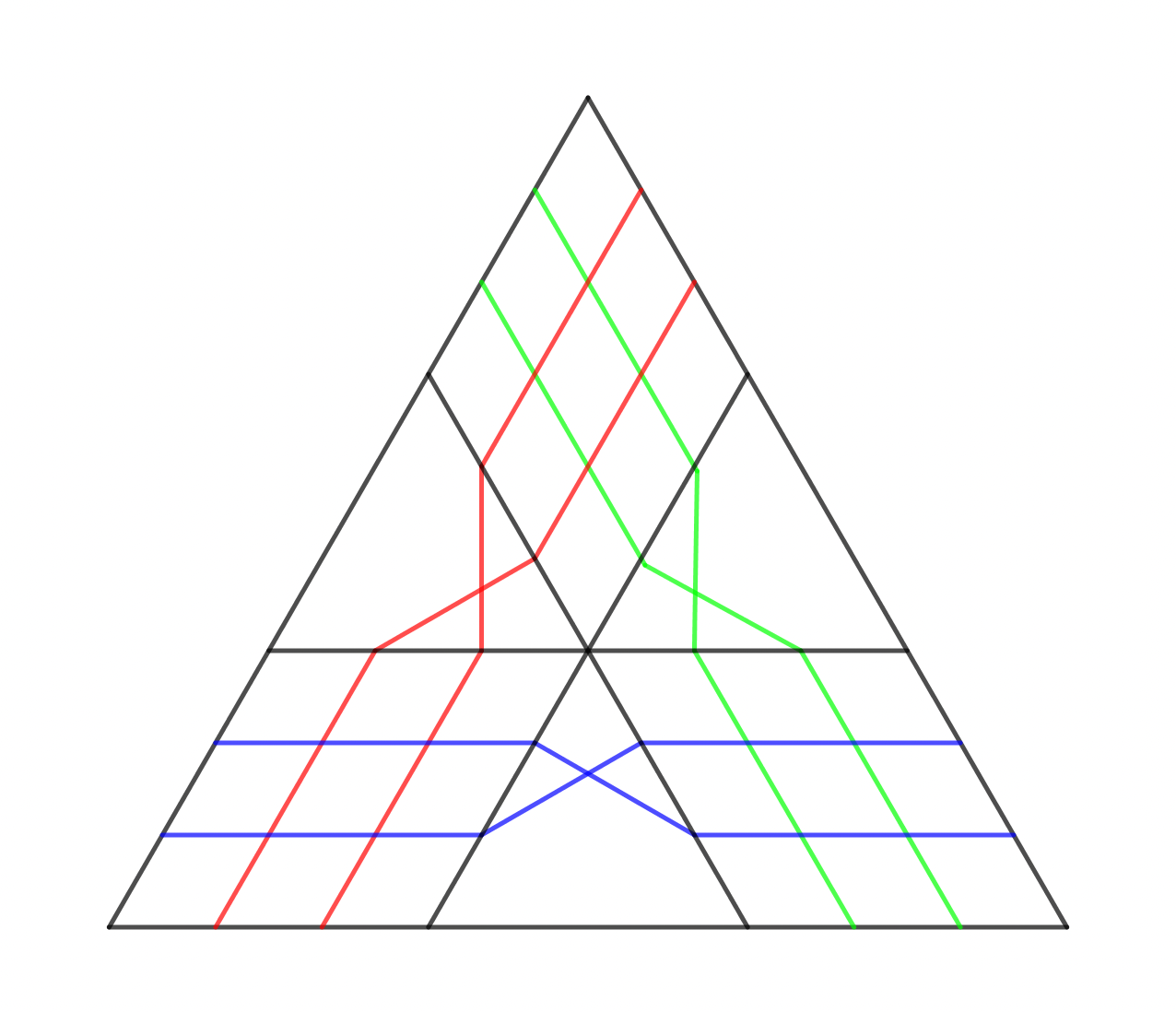Compactifications of Moduli Spaces
A basic introduction
Roma Tre University, Fall 2022
Instructor: Luca Schaffler

General information for the course
-
First meeting. The first meeting will be on November 3 at 16:00 in Aula A, Physics building.
-
Contact. Email: luca.schaffler at uniroma3 dot it
-
Level. PhD course.
-
Credits. 3.
-
Description.
The space of parameters for a family of algebraic varieties of a fixed type is also an algebraic variety called moduli space. These are often at first not compact because the varieties being parametrized may degenerate in different ways acquiring singularities or becoming reducible. Therefore, it is essential for the theory to construct compactifications with good properties.
The main objective of this course is to give the basics of the stable pair compactification (also known as KSBA compactification), which generalizes the Deligne-Mumford-Knudsen compactification \(\overline{\mathrm{M}}_{g,n}\) of the moduli space of \(n\)-pointed curves of genus \(g\) to moduli of higher dimensional algebraic varieties. In this generalization, the compactification parametrizes stable pairs: the datum of a variety \(X\) together with an effective \(\mathbb{Q}\)-divisor \(D\) such that the pair \((X,D)\) has mild singularities (semi-log canonical) and \(K_X+D\) is ample.
We will focus on the fundamental tools of this theory, concrete examples, and computations.
-
Meetings. One or two meetings per week on Tuesday and Thursday according to the schedule below. The class time is always from 16:00 to 18:00. We will meet in Aula A, Physics building.
-
Streaming. The course will be streamed. If you are interested in attending online, please email me at the above email address.
-
Type of examination. Attendance, participation, occasional problems assigned, and one hour presentation of a research paper related to the course. The presentations will be scheduled in February.
-
Prerequisites. An introduction to algebraic geometry (Master's degree level), including schemes and sheaves.
Bibliographical references
-
Valery Alexeev. Moduli of Weighted Hyperplane Arrangements. Link.
-
János Kollár. Families of varieties of general type. Link.
Topics by meeting
-
Meeting 1. (03/11/2022) Introduction to the course. More specifically, we give an overview of the fundamental concepts (stable pair and stable replacement in the sense of the MMP) via explicit examples. Lecture notes.
-
Meeting 2. (17/11/2022) Moduli functor, fine moduli space, universal family, natural transformation, representable functor, Yoneda's Lemma, coarse moduli space. Lecture notes.
-
Meeting 3. (22/11/2022) Stable weighted \(n\)-pointed curves, examples, formula for the arithmetic genus of a nodal curve, Hassett's moduli spaces \(\overline{\mathrm{M}}_{g,\underline{b}}\) of stable weighted \(n\)-pointed curves of genus \(g\), reduction morphisms. Lecture notes.
-
Meeting 4. (25/11/2022) Space of admissible weights \(\underline{b}\) for \(\overline{\mathrm{M}}_{g,\underline{b}}\), fine and coarse chamber decompositions. Singularities of the MMP: discrepancy of a pair, terminal, canonical, Kawamata log terminal, purely log terminal, and log canonical singularities, simple normal crossing divisors, log resolution of singularities. Lecture notes.
-
Meeting 5. (29/11/2022) The blow up of a surface at a point, strict transform and pullback of a curve, intersection product on the blow up, canonical class of the blow up, and examples. In particular, log resolutions of the node and the cusp, the canonical class of an iterated blow up. Lecture notes.
-
Meeting 6. (01/12/2022) Proof that a plane cuspidal curve is not log canonical. Log canonical threshold: definition, proof of existence, and some of its properties. The log canonical threshold of a plane cuspidal curve. Lecture notes.
-
Meeting 7. (13/12/2022) Definition of node, demi-normal schemes, Serre's conditions, Serre's criterion for normality, the conductor divisor of a demi-normal scheme and of its normalization, semi-log canonical pairs and stable pairs. Lecture notes.
-
Meeting 8. (15/12/2022) Examples of stable pairs, the moduli functors for stable varieties, stable pairs, and their representability, moduli space of weighted stable hyperplane arrangements, computation of the stable limit of a non-stable degeneration of lines in the projective plane. Lecture notes.
Final presentations
-
(08/03/2023) Valerio Buttinelli (Sapienza)
Title: Castelnuovo's contractibility criterion and Minimal surfaces
Abstract: The main theme of the presentation is Castelnuovo's contractibility criterion with a focus on the proof. As an application, we will characterize minimal smooth surfaces and see some explicit example.
-
(09/03/2023) Martina Miseri (Roma Tre)
Title: Le singolarità ADE
Abstract: Le singolarità ADE sono l'esempio più semplice di singolarità su superfici e sono note anche come singolarità Kleiniane, punti razionali doppi assolutamente isolati, singolarità canoniche in dimensione 2. Nel seminario, dopo alcuni esempi significativi, vedremo cosa si intende con queste caratterizzazioni e perché sono equivalenti.
-
(30/03/2023) Giusi Capobianco (Tor Vergata)
Title: Le singolarità cicliche quoziente e le risoluzioni di Hirzebruch-Jung
Abstract: Le singolarità cicliche quoziente di tipo 1/r(1,a) sono particolari singolarità di superfici ottenute quozientando \mathbb C^2 per un gruppo ciclico di ordine r. Descriveremo l’anello delle coordinate di una varietà quoziente in termini di monomi invarianti e risolveremo le singolarità usando le frazioni continue di Hirzebruch-Jung. Il calcolo delle frazioni continue r/a e r/r-a è legato a determinati reticoli provenienti dalla geometria torica che calcolano la risoluzione delle singolarità in modo combinatorio.
-
(06/04/2023) Samuele Ciprietti (Sapienza)
Title: Log canonical threshold of plane curve singularities
Abstract: The log canonical threshold (lct) is an important invariant of the singularity of a pair, which is of fundamental importance in many areas. In theory, it would be easy to calculate the lct for any plane curve since we know how to compute a log resolution. In practice, however, the combinatorial complexity of the resolution can be daunting, even for curves as simple as x^b+y^a = 0. We will describe a method that, in many cases, lets you compute the lct easily and we will obtain a simple formula for special types of curves. Finally, we will present an all-out formula to compute the invariant for any kind of plane curve singularities.

